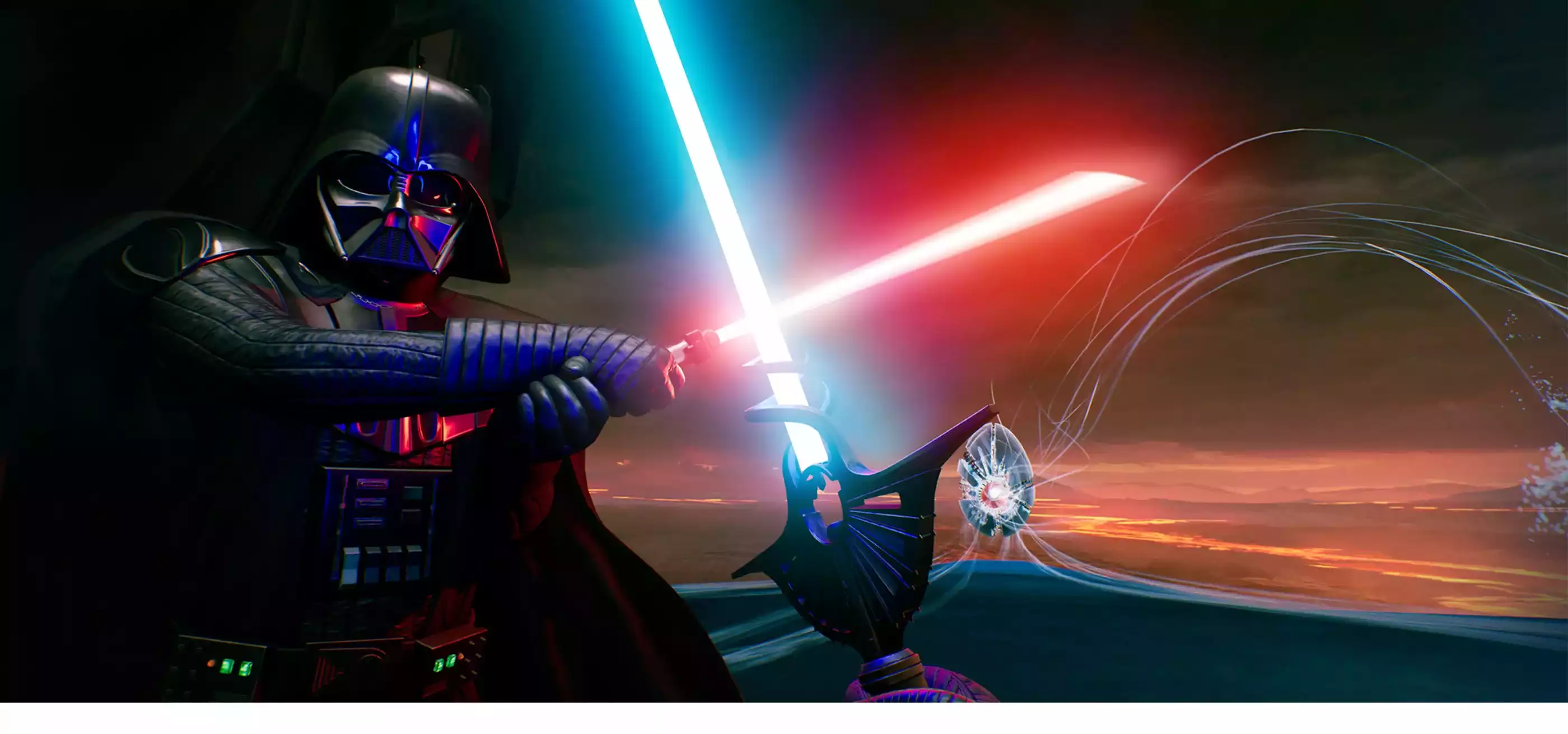
Over at ILM Immersive, Lucasfilm’s immersive entertainment studio formerly known as ILMxLAB, Jose Perez III works as the Supervisor of Creative Development and Experience Design. If you’ve never heard of experience design, that’s probably because it’s a very new field — one Perez, a former longtime game designer, believes might be integral to the future of interactive storytelling. “Here, an experience designer is very similar to a game designer in a lot of ways,” Perez says, “but it’s not always just applied towards making a game.”
Indeed, the Star Wars projects Perez has worked on at ILM Immersive span a wide range of media — from simulator theme park rides like Star Wars: Smuggler’s Run at Disneyland, to cinematic VR titles like Vader Immortal: A Star Wars VR Series and Star Wars: Tales from the Galaxy’s Edge.
On September 15, Perez delivered a guest talk in DigiPen’s Plato Auditorium, breaking down his work in the emerging experience design field at ILM Immersive. Perez stepped into a directorial role on his latest project, Star Wars: Tales from the Galaxy’s Edge, Enhanced Edition demos of which were made available in the campus Rec Room on PlayStation VR2 for current and prospective students to experience leading up to the talk. Perez also discussed how the barriers between game design and film are collapsing to create entirely new storytelling possibilities that the industry has only just begun to explore.
“I think the biggest learning experience coming into this space was learning how far apart the two worlds, games and film, were from understanding each other,” Perez says of his early days at ILM Immersive, back when he was fresh out of the game industry. “When I first started, a lot of the things you take for granted because you’re dealing with gamers just didn’t fly here. You’d explain your idea like, ‘Oh so you’ll go over here, shoot some of these things, then go over there.’ And the film people would go, ‘You do what?’ They didn’t even understand how to walk.”
The misunderstandings, however, ran both ways.
“There’s a level of depth that filmmakers get into as far as telling a story visually that we didn’t really think about quite as much when making games,” Perez says. “There’s nothing that goes into any of these experiences that isn’t supporting the story in some way, something I was really bad about early on. I’d go, ‘You know what we need? Everything! The more things you put in here, the better it will be,’ which is actually just a recipe for disaster.”
Early on, we realized a lightsaber is really the perfect weapon for VR.
When constant communication and teamwork eventually did bring the two worlds together and onto the same page, exciting, brand-new possibilities emerged. Take Vader Immortal, one of Perez’s previous Star Wars VR projects. Created for Oculus and PlayStation VR, the three-part, short-form narrative VR experience puts players in the shoes of a smuggler whose ship is captured by Darth Vader on the fiery planet of Mustafar. The VR experience, dubbed a “theme park film” by The Verge, was met with rave reviews for its immersive storytelling.
“Simple interactions you used to have in games like, ‘Hit ‘A’ to open the door,’ now becomes this totally new thing,” Perez says of cinematic VR experiences like Vader Immortal. “Now, you reach out, slowly turn the door handle, peek through, see who’s in there, decide if you want to open it up all the way — all those little interactions become super interesting. I’m really interested in all these new interactions that can happen between your chest and your hands that weren’t possible before.”
Even though Perez spends lots of his time with filmmakers, his gaming past remains front and center. “I still play video games all night, I can’t not,” Perez laughs. In the Vader Immortal series, Perez had a heavy hand in designing the game’s Lightsaber Dojo, which just as its name implies, gives players control of a lightsaber and lets them slash away.
“Early on, we realized a lightsaber is really the perfect weapon for VR,” Perez says. “It’s a beam of light that cuts through anything, so the first issue everyone runs into with a sword in VR, we didn’t have to deal with. Since it’s a lightsaber, you don’t have to deal with any resistance when you hit something.”
VR also afforded Perez and the ILM Immersive team a chance to really dig into haptics — simulating the feeling of holding a real lightsaber through clever use of the vibrations in the Oculus controller. “The first time Luke lights it up in the movies, that’s such an iconic moment,” Perez says. “We wanted to nail that feeling and make the sound pop, and [with] haptics that made it feel like the blade was literally coming from the bottom of the controller up to the top. After that, it was all about digging into fun Star Wars nerd stuff like, how does reflecting a blaster bolt work? What’s the sound of a droid when you slice it in half?”
For current and prospective students interested in diving into the world of VR and experience design, Perez’s talk offered plenty of nuggets of wisdom. For those still on the fence about getting involved in the emerging field, Perez says the important thing is to ask yourself where your passions lie.
“For me, I wanted to get into this because it’s new, unique, interesting, and I like the challenge of trying to understand this new medium. If you’re interested in exploring a new medium and a new form of storytelling, and you’re willing to take the risks of a very early, new version of interactive storytelling, I think you should absolutely jump in! Coming into work for months and just dorking around with a lightsaber, for me, it can’t get any cooler than that.”
